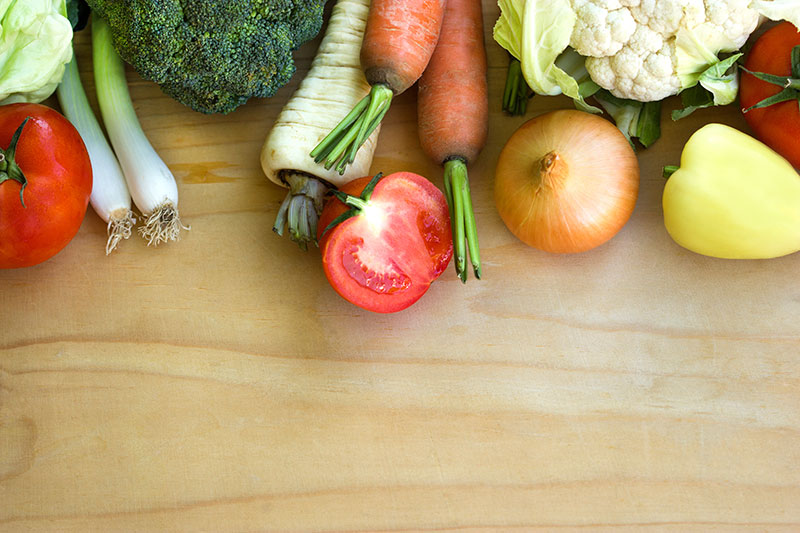Food labels can sometimes read like hieroglyphics—they are loaded with unusual terms with nutrition facts and words that may not mean what you think they mean. Some of the more common terms found on food labels are: All natural, organic, kosher and gluten free. What consumers may not realize is that these terms are not clearly defined by the FDA.
FDA Food Labels: Nutrition Facts?
All Natural
In general, people assume that “all natural’ means that there is nothing artificial in the food. Surprisingly, the FDA does not provide a definition for “All Natural” and leaves it up to the manufacturers to determine whether or not their products are all natural. Reading the ingredients will help you to determine whether or not this is true.
Organic
According to the FDA, a food only has to be 95 percent organic to be labeled “organic.” So, what is in the other 10 percent of that food? Unfortunately, the other 10 percent of the ingredients may not be organic. Only “Pure Organic” foods are labeled as 100% organic.
100% Organic
A food carrying this label has been grown organically. According to the USDA “The use of genetic engineering, or genetically modified organisms (GMOs), is prohibited in organic products. This means an organic farmer can’t plant GMO seeds, an organic cow can’t eat GMO alfalfa or corn, and an organic soup producer can’t use any GMO ingredients. To meet the USDA organic regulations, farmers and processors must show they aren’t using GMOs and that they are protecting their products from contact with prohibited substances, such as GMOs, from farm to table.” By buying locally raised foods, you have the advantage of being closer to the source.
Certified Organic
The USDA label means that foods have been certified by the USDA and guarantee that the food is at least 95 percent organic and a non-GMO food. For some local farmers who are legitimately producing an organic food and following all of the required steps to produce a certified food, their foods are not certified organic because they have chosen not to pay for the certification in order to keep to the price of the food down. The Certified Naturally Grown label indicates the food was grown using the same standards as for organic, but the farm has not actually officially certified by the National Organic Program of the USDA.
Kosher
Kosher certification is privately regulated by many different kosher certification agencies. Food manufacturers must apply, pass inspections, and pay certification fees. Many foods may contain kosher ingredients, but they are not certified as kosher because the manufacturer has chosen not to pay for the certification.
Gluten Free
These are foods that do not contain wheat gluten. A growing number of people are either allergic to wheat gluten or are wheat intolerant. For these people, foods labeled as gluten free are important. The FDA passed voluntary labeling requirements for food manufacturers. According the FDA “gluten-free” is defined as “food either is inherently gluten free; or does not contain an ingredient that is: 1) a gluten-containing grain (e.g., spelt wheat); 2) derived from a gluten-containing grain that has not been processed to remove gluten (e.g., wheat flour); or 3) derived from a gluten-containing grain that has been processed to remove gluten (e.g., wheat starch), if the use of that ingredient results in the presence of 20 parts per million (ppm) or more gluten in the food. Also, any unavoidable presence of gluten in the food must be less than 20 ppm.
Virginia’s Finest
This is a free certification program sponsored by the Virginia Department of Agriculture and Consumer Services (VDACS). When a company chooses to apply for certification, the product(s) submitted must meet standards set by the Virginia’s Finest program such as: taste, color, aroma, texture, FDA compliant label and safe food production. The products are reviewed by a board of specialty food manufacturers and members of the VDACS staff. These standards exceed the minimum standards set by the industry. When you see the Virginia’s Finest certification on a food, you can be assured that your food is safely produced and the label is FDA compliant.
Additives: What they are and what they do
Currently, the FDA does not have a formal process for approving labels. Instead, the FDA waits until a label enters into commerce and will address issues as they arise. One of the more common issues has to do with nutrition fact claims. To understand the impact of nutrition fact claims, you need to understand how to read ingredient lists. Ingredients are listed in decreasing order by weight. If a food contains an ingredient that is an already existing processed food (e.g., ketchup), then that food is listed along with the ingredients of that food as sub-ingredients in parenthesis. Ketchup is a common ingredient found in other processed foods, such as barbecue sauces and hot sauces. Some of the known brands of ketchup contain many additives such as: emulsifiers, thickeners, pH adjusters, taste additives, colors, and fillers. When reading the additives on food labels, it is important to identify what the additives are and whether or not the additives are natural or artificial.
- Emulsifiers prevent foods from separating. Typically, emulsifiers are listed as “hydrogenated fats or hydrogenated oils.”
- Thickeners, such as xanthan gum, makes the food more viscous.
- pH Adjusters, such as citric acid, lower the pH of a product to prevent the growth of pathogens.
- Preservatives, such as sodium benzoate, extend the shelf life and prevents food spoilage.
As you can probably conclude, it is important to read food labels carefully and be aware of the “gray” areas of the labeling laws. The advantage to buying locally made foods is that the producer is usually readily available or the seller may personally know the producer and can answer questions you may have about the food.
Updated June 28, 2019

